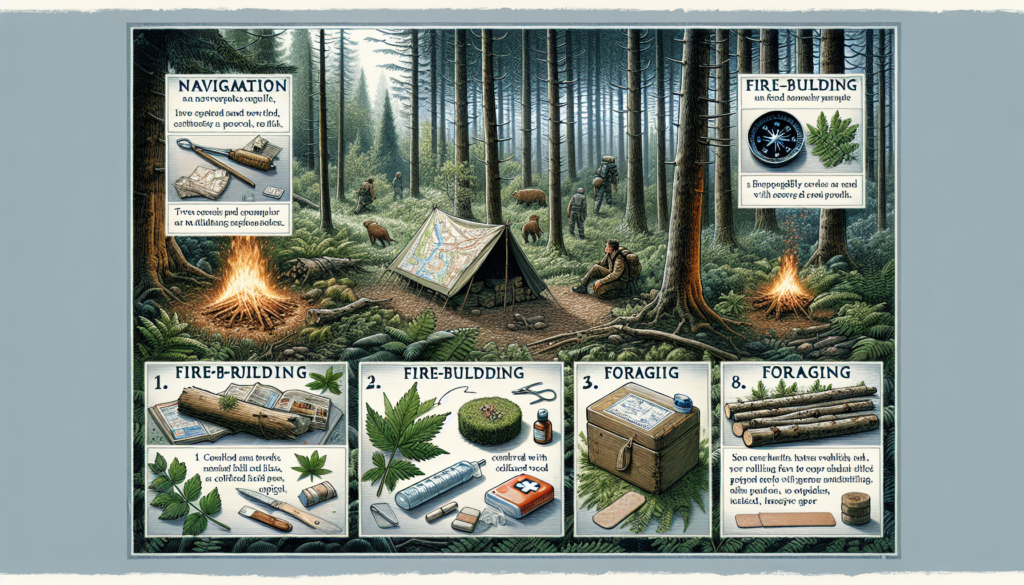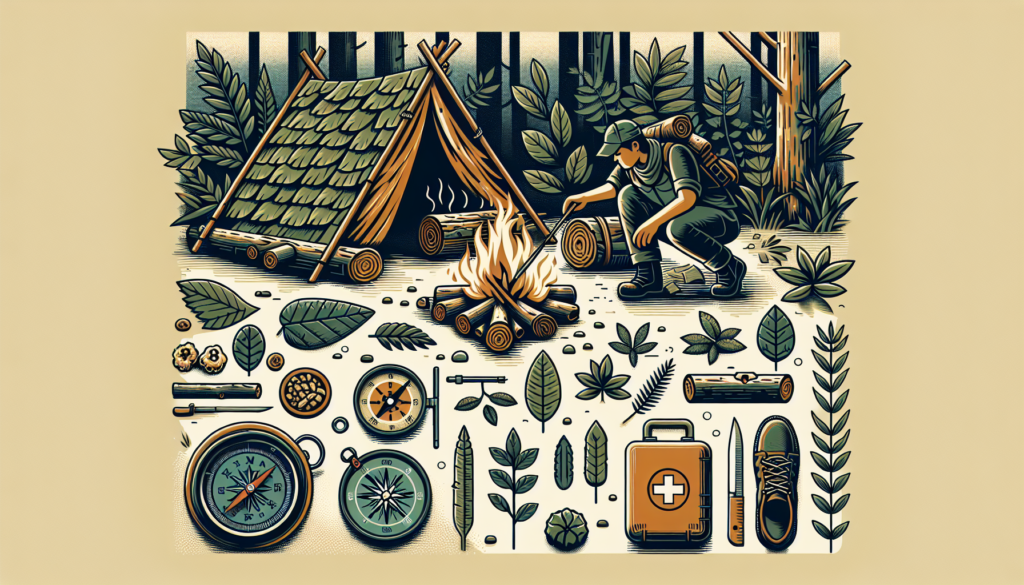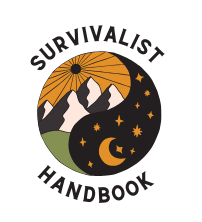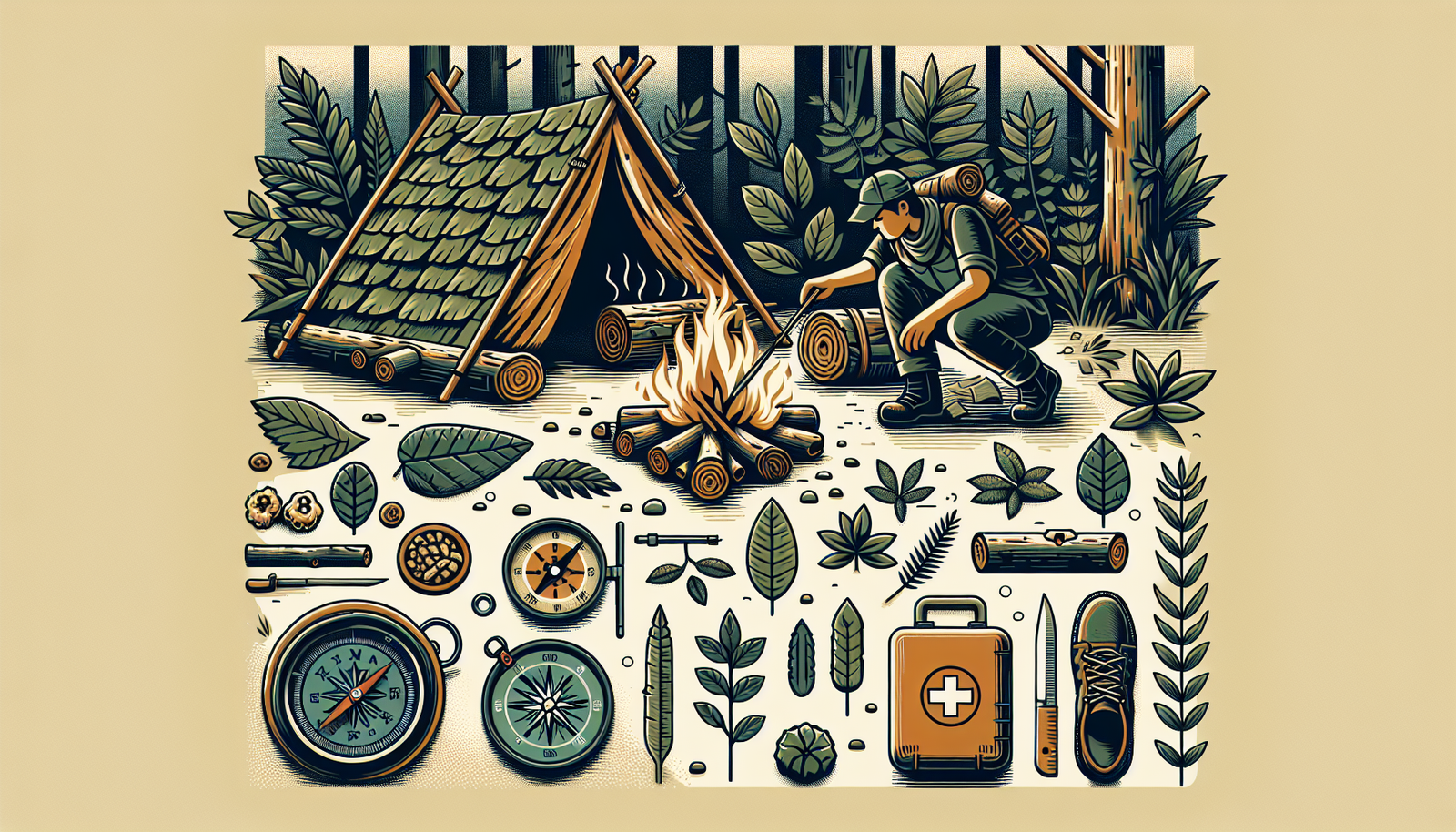In the realm of outdoor exploration, being equipped with wilderness survival skills can truly be a game-changer. In our comprehensive guide, aptly titled “Wilderness Survival Skills,” we aim to provide you with essential techniques and tips to navigate and conquer the wild. Whether you’re a novice venturing into the great outdoors or a seasoned adventurer seeking to brush up on your survival know-how, our resources are here to give you the necessary knowledge and confidence to face any situation head-on. From mastering basic outdoor survival skills to creating your own survival checklist, join us on this thrilling journey into the heart of wilderness survival.
Wilderness Navigation
When venturing into the wilderness, having proper navigation skills is crucial to ensure your safety and the success of your journey. Being able to read maps, use a compass, and utilize GPS technology can greatly enhance your ability to navigate through unfamiliar terrain.
Map Reading
Map reading is the foundation of wilderness navigation. A topographic map provides valuable information about the surrounding landscape, including elevation, water sources, trails, and landmarks. Familiarize yourself with the map’s key, symbols, and scale to accurately interpret the terrain. By understanding contour lines, you can gauge the steepness of slopes and plan your route accordingly. Remember to orient the map using a compass or any visible landmarks to ensure proper alignment.
Compass Navigation
A compass is an essential tool for wilderness navigation, especially when landmarks or GPS signals are unreliable. By understanding the basics of compass navigation, you can determine your direction of travel and maintain a consistent heading. Start by setting your compass to align with the map’s magnetic declination to compensate for the difference between magnetic north and true north. By sighting a distant landmark and taking a bearing, you can follow a specific heading while accounting for obstacles in your path.
Using GPS
Global Positioning System (GPS) technology has revolutionized navigation in the wilderness. A handheld GPS device can provide your exact coordinates, track your route, and guide you to predetermined waypoints. Before relying solely on GPS, it is crucial to carry a backup map and compass as a precaution against battery failure or signal loss. Familiarize yourself with using GPS devices, including inputting waypoints, tracking your progress, and understanding the accuracy of the readings. Always carry spare batteries or a portable power source to ensure uninterrupted functionality.
Shelter Building
When spending time in the wilderness, knowing how to construct a shelter is essential for protection against the elements. Whether you find yourself stranded or simply need a place to rest and recharge during a multi-day hike, understanding the principles of choosing a location and building different types of shelters can be a lifesaver.
Choosing a Location
Selecting a suitable location for your shelter is crucial to ensure your comfort, safety, and protection from the elements. Look for a level area that is free from potential hazards such as falling rocks, dead trees, or flash flood zones. Consider nearby water sources, prevailing winds, and sun exposure when determining the positioning of your shelter. Avoid areas prone to animal activity or insect nests. By carefully assessing your surroundings, you can increase your chances of constructing a durable and secure shelter.
Building a Lean-to Shelter
A lean-to shelter is a simple yet effective shelter design that utilizes a slanted roof to deflect rain and provide a barrier against wind. Start by finding two sturdy trees or vertical supports to serve as the framework for your shelter. Lean long branches or logs against these supports to create the roof and walls. Cover the structure with leaves, pine needles, or branches for insulation and waterproofing. Be sure to leave an open entrance to prevent carbon monoxide buildup from a fire or to allow for airflow during warmer weather.
Creating a Debris Shelter
In situations where natural materials are plentiful, constructing a debris shelter can provide excellent protection from the elements. Begin by finding a large fallen tree or overhanging rock formation as a natural base or framework for your shelter. Collect leaves, ferns, and branches to create a thick and insulating layer over the base. Ensure that your shelter has a low entrance to conserve heat and avoid wind exposure. It is crucial to create a thick layer of insulation between the ground and your body to prevent heat loss from the cold ground.
Fire Making
Fire is one of the most versatile and essential tools in wilderness survival. It provides warmth, cooking capabilities, and a source of light and comfort. Knowing how to effectively select suitable firewood, build a fire pit, and utilize firestarter tools can greatly increase your chances of success in creating and maintaining a fire.
Selecting the Right Firewood
Choosing the right firewood is crucial for starting and sustaining a fire. Look for dry wood that easily catches fire, such as dead branches or twigs. It is essential to gather a variety of wood sizes, from tinder (small, dry twigs) to kindling (slightly thicker sticks), and fuelwood (larger logs). Keep in mind that dead-standing trees or branches are better than wood lying on the ground, as it tends to be damp and less likely to burn. Avoid using pine logs with pitch (resin) as they can produce excessive smoke and leave behind resinous residues.
Building a Fire Pit
Constructing a fire pit not only helps contain the fire but also ensures its proper airflow and safety. Begin by clearing away any flammable debris, ensuring that you have ample space around the fire pit. Dig a shallow hole, approximately one foot deep, and surround it with rocks or non-combustible materials to form a barrier. This containment helps prevent the fire from spreading and provides stability to support your cooking utensils. Ensure that the fire pit is placed away from overhanging branches or other flammable materials.

Using Firestarter Tools
While primitive fire-starting techniques like friction fires (e.g., bow drill or hand drill) can be effective, it is wise to carry reliable firestarter tools that simplify the process. Waterproof matches, lighters, or ferrocerium rods are popular and reliable choices. It is advisable to store these tools in a waterproof container to prevent moisture damage. To maximize their effectiveness, gather tinder, such as dry grass, bark shavings, or cotton balls coated with petroleum jelly, to quickly ignite the fire. As a backup, consider carrying commercially available firestarter sticks or fire paste, which can provide a reliable flame even in adverse conditions.
Water Sourcing and Purification
The ability to find and purify water is essential for survival in the wilderness. Without access to clean water, dehydration and waterborne illnesses can pose significant threats to your well-being. Understanding how to identify water sources, purify contaminated water, and create a solar still can be life-saving knowledge.
Identifying Water Sources
Finding reliable water sources is a vital skill in the wilderness. Look for natural water bodies such as lakes, rivers, or streams. Valleys and depressions often indicate the presence of hidden springs or groundwater. Wildlife activity, such as birds or animal tracks, can also lead you to water sources. Be cautious when relying on stagnant water, as it may contain harmful bacteria or parasites. If you cannot find any water bodies, using natural indicators like green vegetation or digging for water in dry riverbeds can improve your chances of finding hidden water sources.
Methods of Water Purification
Purifying water is essential to eliminate harmful microorganisms and ensure its safety for consumption. Boiling water is the most effective and reliable method, as it kills most pathogens when the water reaches a rolling boil for at least one minute (longer at higher elevations). Another efficient method is using water purification tablets, which are easy to carry and dissolve in water to release chemicals that kill bacteria and viruses. Filtration systems, such as pump filters or straw filters, remove impurities by passing the water through a physical barrier. It is essential to read and follow the instructions carefully when using any water purification method.
Building a Solar Still
A solar still is an effective method to obtain drinkable water in arid environments. To construct a solar still, find a sunny location with moist soil, preferably downhill from a water source. Dig a hole in the ground and place a container or plastic bag in the center. Surround the hole with vegetation or non-poisonous moist materials like leaves or green vegetation. Cover the hole with a sheet of clear plastic, securing the edges with rocks or dirt. As the sun heats the hole, the moisture evaporates, condenses on the plastic, and drips into the container, providing drinkable water. Remember to disinfect the collected water before consuming it.
Edible Plant Identification
Knowing how to identify edible plants in the wild can be a valuable skill when food resources are scarce. However, the ability to differentiate between edible plants and potentially poisonous ones is crucial to avoid severe health risks. Familiarize yourself with basic plant identification, understand the differences between edible and poisonous plants, and learn effective foraging techniques.
Basic Plant Identification
Start by learning to identify common edible plants in your region. Books or online resources specific to your geographical location can be helpful references. Study the physical characteristics, growth patterns, and habitat of edible plants. Familiarize yourself with the leaves, stems, flowers, and fruits of each plant to improve your identification skills. Pay attention to any specific features or unique smells that can assist in identifying edible plants with accuracy.
Edible vs. Poisonous Plants
Differentiating between edible and poisonous plants is crucial to prevent accidental ingestion of toxic substances. Never consume a plant unless you are absolutely certain of its identity and edibility. Learn to recognize common poisonous plants, their distinct features, and any potential confusions with edible plants. Remember that some plants can be edible when prepared a certain way (e.g., cooking or drying), but toxic if eaten raw. Cross-reference your findings with reliable sources and consider consulting with local experts to enhance your understanding.
Foraging Techniques
When foraging for edible plants, practice sustainable harvesting methods to minimize your impact on the environment. Only collect parts of the plant that can be safely consumed, such as leaves, flowers, nuts, or tubers. Avoid plucking the entire plant or stripping it bare of foliage, as this can harm the plant’s ability to regenerate. Be cautious while foraging near roads, agricultural lands, or contaminated areas, as the plants may have absorbed harmful chemicals or pollutants. Always wash and properly prepare foraged plants before consuming them.
Primitive Trapping and Hunting
In a survival situation, acquiring food through trapping and hunting can provide a valuable source of sustenance. Understanding how to construct effective traps, such as snare traps and deadfall traps, as well as developing tracking and hunting skills, can significantly increase your chances of success.
Building a Snare Trap
A snare trap is a simple and efficient way to catch small game. Start by finding an area with signs of animal activity, such as tracks, trails, scat, or feeding areas. Select a location where animals are likely to pass through, such as a game trail or near a water source. Construct a noose using durable cordage or strong vines, ensuring it is the appropriate size for the targeted animal. Set the snare in a way that the animal will inadvertently trigger it when passing through. Regularly check and adjust your snares to maximize the chances of success and to minimize unnecessary suffering.

Constructing a Deadfall Trap
A deadfall trap is designed to crush or immobilize the animal by relying on its curiosity or natural instincts. Find a suitable location where animal activity is evident, such as a burrow entrance or along a game trail. Gather large rocks or logs to create the trigger and the crushing mechanism. Set up the deadfall trap by positioning the trigger in a way that the animal’s disturbance will cause the weight to fall and ensnare the prey. Take proper precautions when setting such traps to avoid injury to yourself or accidentally trapping non-target animals.
Tracking and Hunting Skills
Developing tracking and hunting skills can significantly improve your ability to procure food in the wilderness. Learn to identify animal tracks, scat, and other signs of animal presence to determine their species, size, and direction of travel. Observe and study different behaviors and habits of animals to understand their patterns and improve your hunting strategies. Practice patience, stealth, and marksmanship when hunting with firearms or other hunting tools. Always adhere to local hunting regulations and ethical practices to ensure conservation and respect for wildlife.
Finding and Filtering Air
While finding and filtering air might not be a primary concern in most situations, understanding how to identify safe air sources and create an improvised air filter can be crucial in specific scenarios, such as encountering smoke from wildfires or being trapped in a confined space with limited ventilation.
Identifying Safe Air Sources
Identifying safe air sources is critical to ensuring your respiratory well-being in emergency situations. Move to higher ground or open spaces to avoid dense smoke or chemical fumes, as they tend to settle in low-lying areas. If indoors, seek rooms with windows and usable ventilation systems. Avoid locations that may contain toxic gases or pollutants, including basements or areas near chemical storage. Pay attention to wind direction and try to position yourself upwind of the source of contamination.
Creating an Improvised Air Filter
In situations where the air quality is compromised, creating an improvised air filter can reduce inhalation of harmful particles. Start by finding a piece of cloth, bandana, or any porous material that you can tie around your face to cover your mouth and nose. Wet the cloth slightly with water if possible, as it can help trap fine particles more effectively. Breathe through the filter, taking slow and deep breaths to minimize inhaling contaminated air. Keep in mind that an improvised air filter is not a substitute for escaping or seeking professional respiratory protection if available.
Emergency Signaling
During a wilderness survival scenario, getting noticed and attracting the attention of potential rescuers is crucial. Employing various emergency signaling techniques, such as using mirror reflectors, building signal fires, and creating SOS signals, can significantly increase your chances of being located and rescued.
Using Mirror Reflectors
A mirror reflector, such as a signaling mirror or any reflective surface like a CD or aluminum foil, is an effective tool for long-range signaling. Position yourself in an open area with ample sunlight. Hold the mirror reflector firmly and reflect the sunlight toward potential rescuers or passing aircraft. Aim the reflection at the target, moving the mirror in a slow and deliberate manner to catch their attention. Use long pulses or flashes to increase visibility and differentiate the signal from any other reflected light.
Building Signal Fires
Building a signal fire is one of the most traditional methods of attracting attention in emergency situations. Select a visible location with minimal obstructions, such as a clearing or hilltop. Gather combustible materials, such as dry leaves, twigs, and branches, to create a substantial fire. Build the fire in a traditional pyramid or teepee structure to maximize flame height. Add green vegetation or moist materials to produce smoke, which can enhance the visibility of the fire. Maintain the fire, adding fuel as necessary, and create distinctive patterns or sequences to indicate distress or urgency.
Creating SOS Signals
The SOS signal is an internationally recognized distress signal for calling for help in emergency situations. To create an SOS signal, use any suitable materials to form the letters “SOS” in a visible location, such as an open meadow or beach. You can use rocks, tree branches, or any available materials that contrast with the background. Make sure the letters are large enough to be visible from a distance. Space the dots evenly and ensure they are well-defined. Always consider the location and lighting conditions when positioning your SOS signal to maximize its visibility.
Basic First Aid
Acquiring basic first aid knowledge is essential in any wilderness adventure. Being able to treat minor cuts and burns, deal with fractures and sprains, and recognize and address hypothermia can make a significant difference in managing injuries and medical emergencies.
Treating Minor Cuts and Burns
Minor cuts and burns are common injuries in the wilderness. Rinse the wound with clean water if available to remove dirt and debris. Apply an antiseptic solution or an antibacterial ointment to prevent infection. Cover the wound with a sterile bandage or dressing, ensuring it is secure and clean. For minor burns, immerse the affected area in cool water or use a cold compress to alleviate pain and reduce swelling. Avoid using ice directly on the burn, as it can cause further tissue damage. Consider carrying a basic first aid kit that includes bandages, antiseptic wipes, and burn gel.
Dealing with Fractures and Sprains
Fractures and sprains can significantly hinder mobility and require proper attention in a wilderness setting. If a fracture is suspected, immobilize the injured area by splinting it with available materials like branches, trekking poles, or clothing. Secure the splint firmly but not too tight to impede circulation. For sprained joints, remember the RICE method: Rest the injured joint, apply Ice or a cold compress, provide Compression using a bandage, and Elevate the injured limb to reduce swelling. Consider carrying a compact splint and compression bandages in your first aid kit.
Recognizing and Addressing Hypothermia
Hypothermia, a potentially life-threatening condition, occurs when the body loses heat faster than it can produce. Recognizing and addressing hypothermia promptly is crucial for survival. Look out for symptoms like intense shivering, confusion, drowsiness, or loss of coordination. If hypothermia is suspected, start by moving the affected person to a warmer location and removing any wet clothing. Insulate them from the ground using a sleeping pad or dry materials. Provide warm fluids if they are conscious and alert. If possible, create a barrier against wind and cold using available resources like tarps or emergency blankets. Seek medical attention as soon as possible.
Improvising Tools and Equipment
In wilderness survival situations, being able to craft your own tools and equipment is a valuable skill. By learning how to create primitive tools, use natural cordage for various purposes, and create DIY water containers, you can enhance your capabilities and resourcefulness.
Crafting Primitive Tools
Crafting primitive tools from natural materials can serve a variety of purposes in a survival situation. Learn basic techniques for shaping and carving wood to create tools like spears, digging sticks, or traps. Utilize rocks or bone for crafting cutting tools or knives by carefully shaping and sharpening the edges. Experiment with materials found in the environment, such as animal sinew or plant fibers, to create cordage or lashings. Always prioritize safety and exercise caution when handling sharp or pointed objects.
Using Natural Cordage
Natural cordage, made from plant or animal fibers, can be utilized for various tasks, such as shelter construction, securing objects, or creating traps. Learn to identify suitable cordage materials in your environment, such as plant fibers from nettle, yucca, or inner tree bark. Harvest and process the fibers by stripping away the outer layers and separating them into thin strands. Practice different types of cordage-making techniques, including twisting or braiding, to create strong and reliable rope. Experiment with different thicknesses and lengths to cater to specific needs.
Creating DIY Water Containers
Having reliable water containers is crucial for carrying and storing water in the wilderness. In the absence of commercial water bottles or containers, improvisation becomes essential. Look for natural hollowed-out vessels, such as large leaves, gourds, or the roots of certain tree species. Coating the inside of these containers with natural resins, like pine sap, can help improve water-holding capabilities. Additionally, consider using readily available materials like animal bladders or intestines, which can be tied securely to create water-tight pouches. Always ensure that any improvised containers are thoroughly cleaned and disinfected before use.
In conclusion, wilderness survival skills are essential for anyone venturing into the great outdoors. By mastering map reading, compass navigation, and using GPS, you can confidently explore unknown territories. Understanding the principles of shelter building, fire making, water sourcing and purification, edible plant identification, trapping and hunting, finding and filtering air, emergency signaling, basic first aid, and improvising tools and equipment empowers you to overcome challenges and ensure your safety in the wilderness. Remember to always prioritize preparedness, practice sustainability, and respect the natural environment as you embark on your wilderness adventures. Stay safe, and enjoy the beauty of nature!

